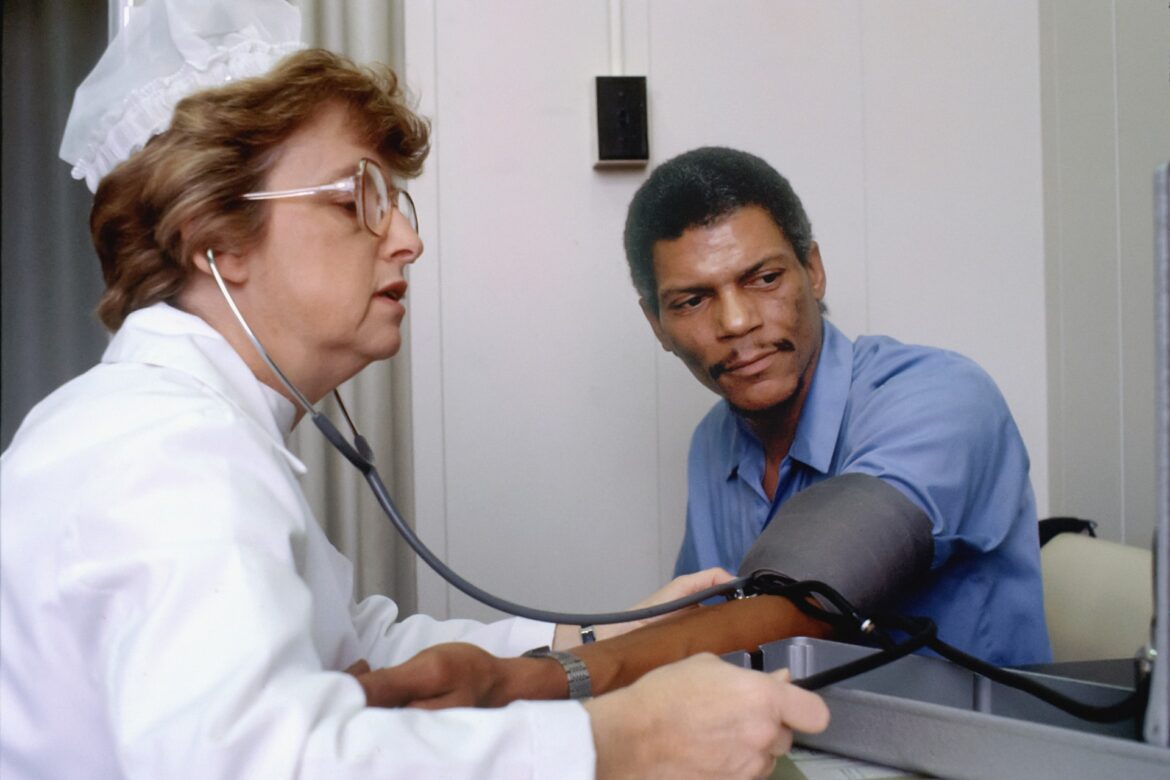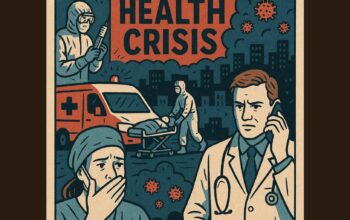BALTIMORE – Despite great strides in prostate cancer treatment over the past several years, racial disparities in care persist, according to new data presented this year during the 116th Annual Meeting of the American Urological Association (AUA). Three studies highlighting this topic were presented during a virtual press session, which was moderated by Brian McNeil, MD, AUA spokesperson and Associated Dean for Clinical Affairs in the College of Medicine at SUNY Downstate Health Sciences University. The recordings from this session are now available for viewing.
Prostate cancer is the most common cancer after skin cancer, and the second leading cause of death in American men. If affects 1 in 8 men, with the number rising to 1 in 6 for Black men and comprises more than 1 in 5 of all new cancer diagnoses for Hispanic men. In 2021, an estimated 248,530 men will be newly diagnosed with prostate cancer, a nearly 30 percent increase over 2020 statistics. It is estimated more than 34,100 of those diagnosed in 2021 will die from this disease.
Study Details
Publication #: PD34-03
Racial Disparity in the Utilization of New Therapies for Advanced Prostate Cancer: Black and Hispanic men have a high burden of prostate cancer mortality. In 2010, the U.S. Food and Drug Administration (FDA) approved a new immunotherapy agent for treating metastatic castration resistant prostate cancer (mCRPC). Using National Cancer Database data, researchers analyzed annual trends of men with mCRPC treated with chemotherapy or immunotherapy between 2010 and 2015 and compared utilization by demographic and clinical features. A multivariate analysis was then performed to determine predictors of receiving immunotherapy vs. chemotherapy. Results showed:
- Of the 1,238 patients included as part of the study, 63 percent were white, with private insurance.
- Overall, there was increased utilization of immunotherapy from 2010 to 2013, followed by a decrease in 2015. Simultaneously, there was a decrease in utilization of chemotherapy from 2010 to 2013.
- The increase use of immunotherapy was predominately in white men and not seen in Black or Hispanic men.
- Chemotherapy seemed to be used more often in a comprehensive community cancer program.
Study Details
Publication PD3-02
Racial Disparities in Prostate Cancer Treatment in a Multi-Institutional Regional Collaborative: Early in the COVID-19 pandemic, many cancer resources were diverted, leaving scores of patients, including those with prostate cancer, with limited to no access to surgical treatment. Although early-stage prostate cancer does not always require immediate treatment, researchers compared prostatectomy rates between Black and White patients with localized prostate cancer during the first wave of the COVID-19 pandemic, and prior.
Results showed:
- A little more than 1 percent of Black men underwent prostatectomy surgery during the initial wave of COVID-19, while 26 percent of White men underwent surgery.
- However, before the pandemic, there was no difference between either race in the rates of the prostatectomies.
- Changes in surgical volume varied by site (33 percent increase to complete shutdown), with sites that experienced the largest reduction in cancer surgery, caring for a greater proportion of Black patients.
Researchers concluded systemic inequities exist within health care and are likely applicable across medical specialties. Public health efforts are needed to fully recognize the unintended consequence of the diversion of cancer resources to the COVID-19 pandemic in order to develop balanced mitigation strategies as viral rates continue to fluctuate.
Study Details:
Publication MP60-05
Molecular Profiling of Prostate Cancer Reveals Increased Inflammatory Markers and Poor Clinical Outcomes in African American Men Compared to European American Men: For years, researchers have been trying to understand why African American men tend to harbor more aggressive prostate cancer than men of other racial and ethnic groups; however the underlying cause continues to remain controversial. This limited data prompted researchers in Michigan to explore the differences in tumor biology for African American and European American men with prostate cancer in order to better assess the impact on their outcomes.
Analyses of more than 1,500 probes were performed to assess the expression of 517 genes in prostate cancer radical prostatectomy specimens from nearly 640 African American and European American men. The primary endpoint was biochemical recurrence and the secondary endpoint was prostate cancer specific mortality.
Results Showed:
- Twenty-four percent of African American men and 18 percent of European American men developed biochemical recurrence.
- African American men with a prostate cancer Gleason Grade 1-2 had a higher incidence of biochemical recurrence, compared with Eastern European men following radical prostatectomy, suggesting a more aggressive biological behavior in African American men with early stage disease.
- However, the biochemical recurrence risk was not significantly different between African American and European American men with Gleason Grade 3-5 disease.
- Differential Gene Expression and Gene Set Enrichment Analysis revealed upregulation of inflammation, TNF-alpha signaling, apoptosis, androgen response and epithelial to mesenchymal transition, among other pathways in African American men compared to European American men.
- The molecular profile of prostate cancer in African American men is different from that of European American men, with inflammation playing a prominent role.
“These studies highlight important research in better predicting the behavior and outcomes of prostate cancer in African American men compared to men of other racial and ethnic groups,” said Dr. McNeil. “They also illuminate the systemic inequities and opportunities within healthcare to eliminate the burden of disease in minority populations.”
Publication Number PD34-03
INTRODUCTION AND OBJECTIVE: Black and Hispanic patients have a high burden of prostate cancer mortality and this may be related to barriers to treatment. In 2010, Sipuleucel-T immunotherapy was the first FDA approved agent (since docetaxel) for metastatic castration resistant prostate cancer (mCRPC). We sought to identify whether there was disparity in the utilization of immunotherapy in the treatment of black and hispanic patients with mCRPC.
METHODS: Using the National Cancer Database, we identified patients between 2010-2015 with likely minimally/asymptomatic mCRPC: PSA 50-200ng/ml, Charlson 0-2, age <70, stage M1, treated with chemotherapy or immunotherapy. We analyzed annual trends for chemotherapy and immunotherapy use and compared utilization by demographic and clinical features. Multivariate analysis was performed to determine predictors of receiving immunotherapy vs chemotherapy.
RESULTS: 1238 patients were included. Most were Non-hispanic white (63%), with private insurance (46.4%). Overall, there was increased utilization of immunotherapy from 2010 to 2013 (from 3.8% to 39.8%), followed by decrease to 10.9% in 2015 and, simultaneously, there was decreased utilization of chemotherapy from 2010 to 2013 (from 96.2% to 60.2%). The increased use of immunotherapy was predominantly in white patients and not seen in black and Hispanic patients (Figure 1). Relative to chemotherapy, immunotherapy was less likely to be used in a comprehensive community cancer program (OR 0.52, 95% CI 0.30 – 0.89), and patients with mid-high SES (OR 0.49, 95% CI 0.31 – 0.78).
CONCLUSIONS: FDA approval of Sipuleucel-T in 2010 for mCRPC led to increased utilization of immunotherapy shortly thereafter, but this was mainly in white patients. Black and Hispanic patients proportionately did not exhibit increased utilization of this novel agent after 2010. Further study is necessary to help understand barriers to access to new treatment in mCRPC and eliminate the burden of disease in minority populations.
Publication Number PD03-02
INTRODUCTION AND OBJECTIVE: Minority communities disproportionately shouldered poor COVID-19 outcomes, however the impact of the pandemic on prostate cancer (PCa) surgery is unknown. To that end, we sought to determine the racial impact on PCa care during the first wave of the pandemic.
METHODS: Using a multi-institutional collaborative we evaluated practice patterns for Black and White patients with untreated non-metastatic PCa during the initial COVID-19 lockdown (March-May 2020) compared to prior (March-May 2019). Patient and practice characteristics were compared by race using Fisher’s exact and Pearson’s chi-square to compare categorical variables and Wilcoxon rank sum to evaluate continuous covariates. We determined the covariate-adjusted impact of year and race on surgery, using logistic regression models with a race*year interaction term.
RESULTS: Among the 647 men with non-metastatic PCa, 269 received care during the pandemic and 378 prior. Surgery was significantly less likely in Black men (1.3% v 25.9%; p<0.001), despite similar COVID-19 risk factors, biopsy Gleason grade group, and comparable surgery rates prior (17.7% vs. 19.1%; p=0.75). Black men had higher PSA (8.8 vs. 7.2 p=0.04) and were younger (38.2% vs. 24.4% <60 yr; p=0.09). Regression results demonstrated an 94% reduced odds of surgery (OR=0.06, 95% CI 0.007-0.43; p=0.006) for Black patients, with no change for White patients (OR=1.41, 95% CI 0.89-2.21; p=0.142), after adjusting for covariates. Changes in surgical volume varied by site (33% increase to complete shutdown), with sites that experienced the largest reduction in cancer surgery, caring for a greater proportion of Black patients (figure).
CONCLUSIONS: In a large multi-institutional regional collaborative, odds of prostatectomy declined only among Black patients during the initial wave of the COVID-19 pandemic. While localized prostate cancer does not require immediate treatment, this study illuminates systemic inequities within healthcare. Public health efforts are needed to fully recognize the unintended consequence of diversion of cancer resources to the pandemic in order to develop balanced mitigation strategies as viral rates continue to fluctuate.
Publication Number: 60-05
INTRODUCTION AND OBJECTIVE: African American men (AAM) with prostate cancer (PCa) often harbor more aggressive disease compared to European American men (EAM). However, the underlying cause for disparities in PCa outcomes is controversial. We performed gene expression analysis to characterize differences in tumor biology in AAM and EAM with PCa and assess the impact on outcomes.
METHODS: Microarray analyses using 1,507 probes were performed to assess the expression of 517 genes in PCa radical prostatectomy (RP) specimens from 270 AAM and 369 EAM from 1991-1996. The primary endpoint was biochemical recurrence (BCR) and secondary endpoint was PCa-specific mortality (PCSM). Cox proportional hazard regression analyses were performed adjusting for age, pre-treatment PSA, Gleason grade group (GG), and T-stage. Differential Gene Expression (DEG) analysis was performed using the limma R package, with correction for multiple comparisons using the Benjamini-Hochberg procedure (false-discovery rate (FDR) of <0.05 considered significant). Gene Set Enrichment Analysis (GSEA) was performed to identify enriched hallmark pathways using R package fgsea.
RESULTS: The median age of AAM and EAM was 64 (IQR 56-72) and 62 (IQR 54-70) years, respectively. A total of 66 (24%) AAM and 67 (18%) EAM developed BCR (p=0.002; median follow up 10.5 and 13.8 years, respectively). Sixteen men experienced PCSM in each group (5.9% and 4.3% in AAM and EAM, respectively; p=0.080). Interestingly, among those with GG1-2 disease, AAM were more likely to develop BCR than EAM (HR 2.3, 95% CI 1.3–4, p=0.004). However, the BCR risk was not significantly different between AAM and EAM with GG3-5 disease (p=0.370). DEG and GSEA revealed upregulation of inflammation, TNF-alpha signaling, apoptosis, androgen response, and epithelial to mesenchymal transition, among other pathways, in AAM compared to EAM (Figure 1; FDR <0.05).
CONCLUSIONS: AAM with GG1-2 PCa had a higher incidence of BCR compared with EAM following RP, suggesting a more aggressive biologic behavior in AAM in early disease. The molecular profile of PCa in AAM is different from that in EAM, with inflammation playing a prominent role. Prognostic gene signatures accounting for these biological differences are needed to facilitate better disease management.
The full abstracts are also available for viewing: https://www.auajournals.org/doi/10.1097/JU.0000000000002038.03
https://www.auajournals.org/doi/10.1097/JU.0000000000001967.02
https://www.auajournals.org/doi/10.1097/JU.0000000000002095.05
About the American Urological Association: Founded in 1902 and headquartered near Baltimore, Maryland, the American Urological Association is a leading advocate for the specialty of urology, and has nearly 23,000 members throughout the world. The AUA is a premier urologic association, providing invaluable support to the urologic community as it pursues its mission of fostering the highest standards of urologic care through education, research and the formulation of health policy.
Contact:
Taylor Titus, AUA
443-454-3743, ttitus@auanet.org
Source: PR Newswire
Photo by National Cancer Institute on Unsplash




